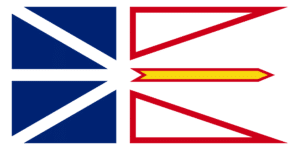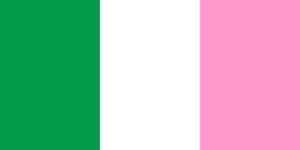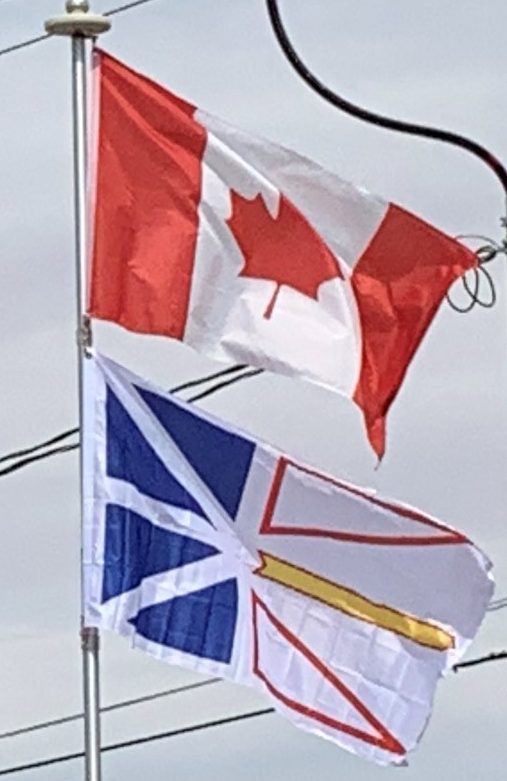The design was chosen due to its broad symbolism. The blue represents the waters of the sea, lakes and rivers; the white represents snow and ice; the red represents human effort, and the gold) symbolizes the confidence the people of Newfoundland and Labrador have in themselves and for the future.

The flag design is that of Beothuk and Innu decorative pendants worn hung from a cord around the neck. Pratt viewed these at the Provincial Museum. With the blue, red and white colours applied the design has an intentional overall resemblance to the Union Jack, as a reminder of British Isles heritage and historic connections. The two red triangles represent the two areas of the province, the continental region (Labrador) and the island region (Newfoundland). The gold arrow, according to Pratt, points towards a “brighter future”; the arrow becomes a sword, honouring the sacrifices of Newfoundlanders and Labradorians in military service when the flag is displayed as a vertical banner. The red triangles and the gold arrow form a trident, symbolizing the province’s association with the fisheries and other resources of and under the sea.
Newfoundland Tricolour:
The flag commonly but mistakenly presented as the “Newfoundland Tricolour”, the Pink, White and Green” is the flag of the Roman Catholic fraternal organization the Star of the Sea Association (SOSA) established in St. John’s in 1871. Its colours are present in the flag of the St. John’s Fire Department and in the municipal flag of Paradise, Newfoundland and Labrador. It also appears on the crests or escutcheons of some armorial bearings portrayed in the Public Register of Arms, Flags and Badges of Canada.

The true Newfoundland tricolour is the Red (at the hoist), White (centre) and Green (on the fly) tricolour flag of the Newfoundland Natives’ Society (NNS) which was established in St. John’s in 1840 with subsequent branches in other locations. The Natives’ Society was established to help native-born and other long-time residents of Newfoundland in dealings with colonial government officials, big business owners who were not always residents and the many new comers to the colony who considered themselves to be much higher in social standing than the locals.
The origins of the “Pink, White and Green” were obscure but recent scholarship has determined it was first used in the late 1870s or early 1880s by the Roman Catholic fraternal organization the Star of the Sea Association. In the Catholic Church, Mary, the mother of Jesus, is known as the “Star of the Sea” (in Latin “Stella Maris”) The flag became more widely used by other St. John’s and surrounding area Catholic groups shortly thereafter. The origin and meaning of the colors is widely debated with no certain answers. Detailed information about this issue can be found elsewhere.
